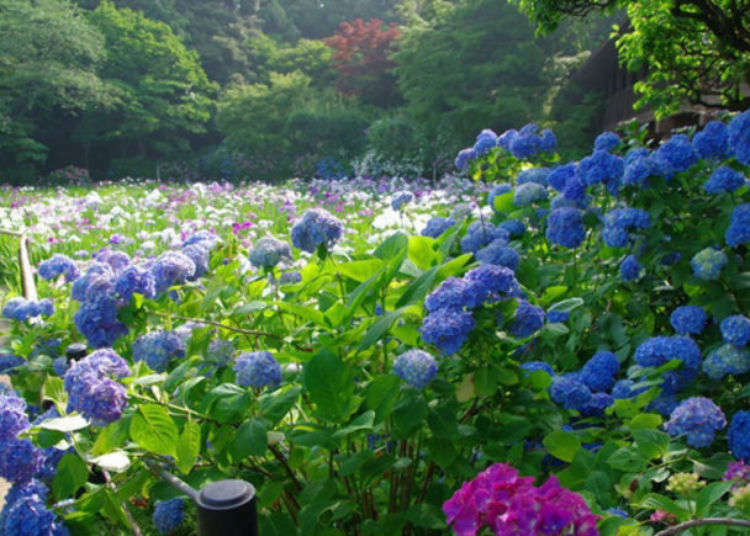
Chiba's Hondoji Temple is a famous place for viewing Japanese hydrangeas.
Located about 40 minutes away from Tokyo in the suburb of Matsudo City, Chiba Prefecture, exploring this area where more than 50,000 hydrangeas are in full bloom is one of the best things to do in Chiba. Follow along as we take you inside!
- Table of Contents
-
- Hondoji Temple: Access and background
- Entering Hondoji, Chiba's Hydrangea Temple
- Hondoji is a power spot for safe transport, child treasure, and good luck!
- The hydrangea pattern of the original Goshuin seal book is popular!
- Hondoji Temple: A Chiba sightseeing attraction that's beautiful in each season
- Even on a rainy day in Chiba, Hondoji Temple is stunning
- Related Articles
Hondoji Temple: Access and background
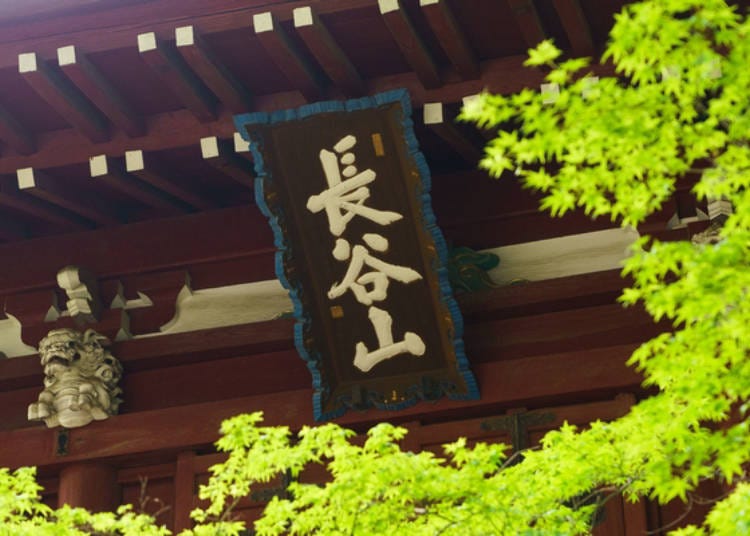
Hondoji Temple is about a 10-minute walk from JR Kita-Kogane Station. You'll enjoy the quiet approach.
Together with Choeisan Honmonji Temple in Ikegami and Chokosan Myohonji Temple in Kamakura, Chokokusan Hondoji is one of the main temples of the Nichiren sect, being where the priests Nichizo and Nichirin were born. It was established in 1277.
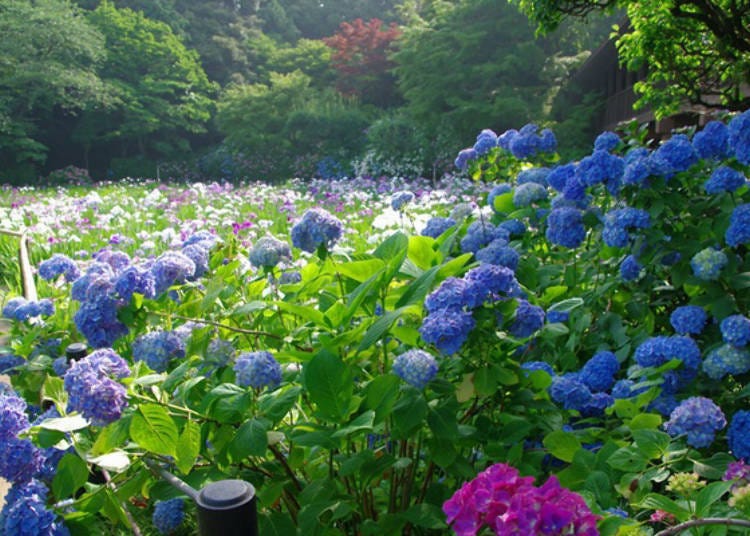
There are more than 50,000 Japanese hydrangeas on the grounds, surpassing Kamakura. Hondoji, also known as the “hydrangea temple,” is a famous spot for cherry blossoms in the spring, irises in the rainy season, and about 1,500 maples in the fall.
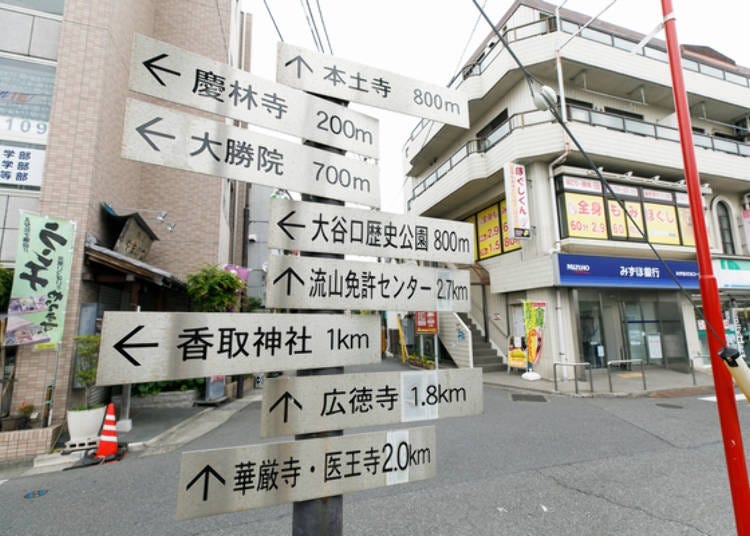
It is about 40 minutes from Ueno Station in Tokyo. Exit the ticket gate at Kita-Kogane Station on the JR Joban Line and cross the pedestrian bridge.
Follow the guide and go straight along the straight road. In about 2 to 3 minutes, the stone pillars labeled "Chokosan" and "Hondoji" will appear on the left and right, and you will enter through an arch of green trees.

Large evergreen trees such as pine and cedar stand on both sides of the approach, making it look like a green tunnel. There are shrubs of hydrangea as well, and the anticipation increases.
When I visited in April, the green was refreshing and I felt like being wrapped in the embrace of spring. If you aim for the temple at a leisurely pace, you will soon see the Niomon temple gate painted in red.
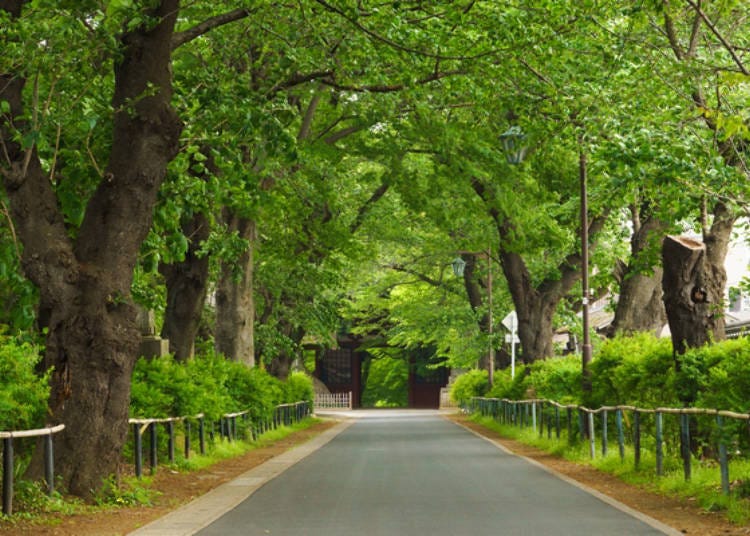
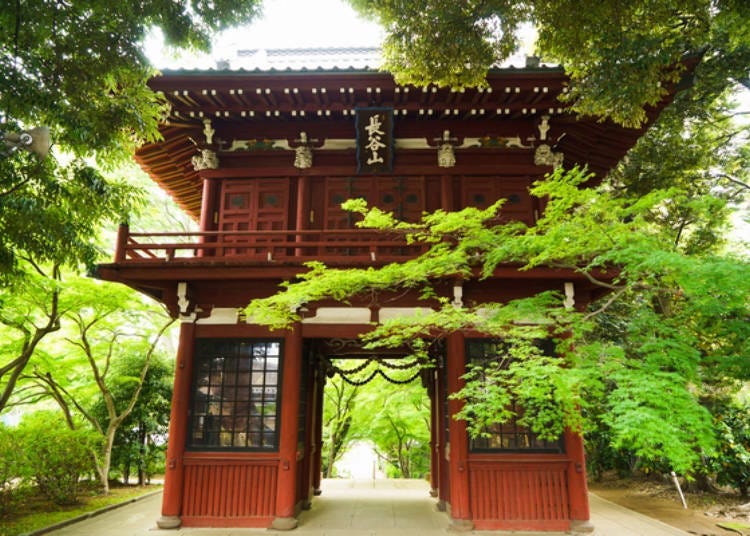
As you pass through the Niomon Gate, which is guarded by Nio, two wooden warriors, you can see a long staircase that leads to the grounds. Countless hydrangea shrubs spread to the left and right of the stairs. The grounds we'll be introducing are beyond here, but when you reach this point during the flowering season, you'll already be captivated by the beautiful blue of Japanese hydrangea.
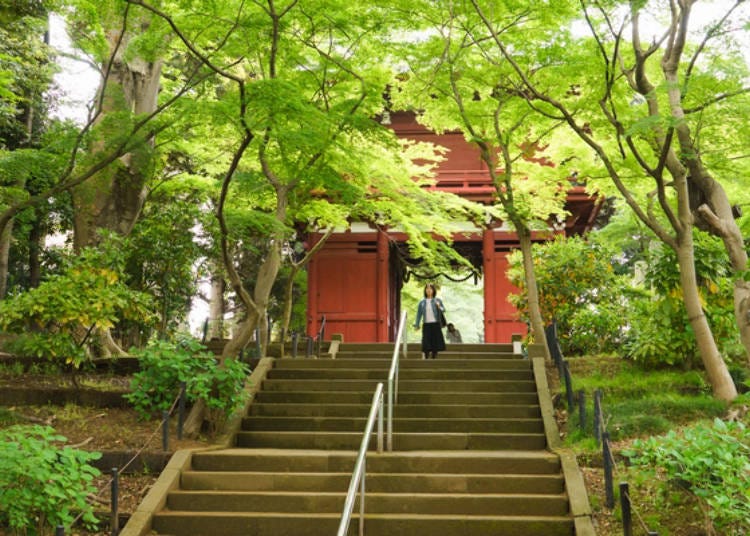
Below the stairs, there is the front of the main hall where the entrance of the temple is located.
Entering Hondoji, Chiba's Hydrangea Temple

As the name “hydrangea temple" implies, seasonal flowers abound! Take a slow stroll through the grounds to see them all.
The grounds have a gentle slope, with the main hall in front of the entrance and the five-storied pagoda on the left. An expansive ground of approximately 1 hectare is home to Japanese hydrangeas and many other plants.
Follow the route and walk to see the highlights of the flowers.
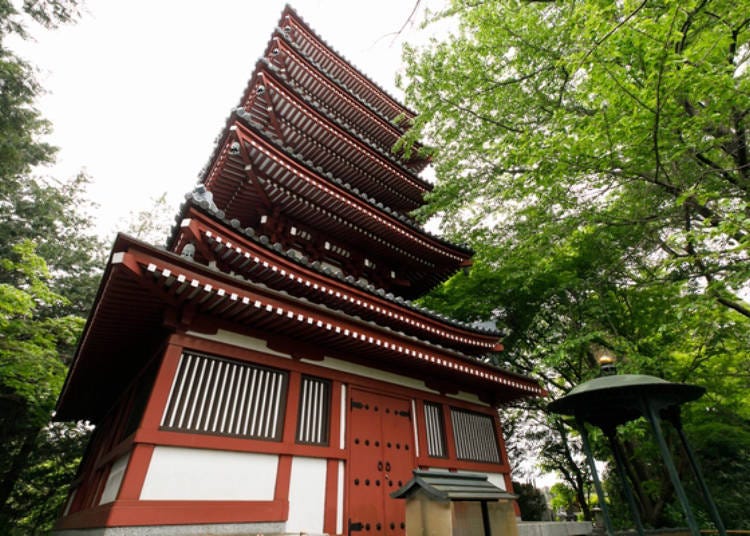
Around the five-storied pagoda, colorful hydrangea and cherry blossoms are planted, making it a very popular photo spot.
As you gaze up from the bottom, seasonal flowers and trees, such as hydrangea, maple, and cherry blossoms, are visible. The five-storied pagoda is connected to the sky, and you can enjoy a stunning sight with the contrast of the plants and pagoda.

Next, head to the main hall. Hydrangea, azalea, maple, etc. are also planted around here, adding color to the reverence.
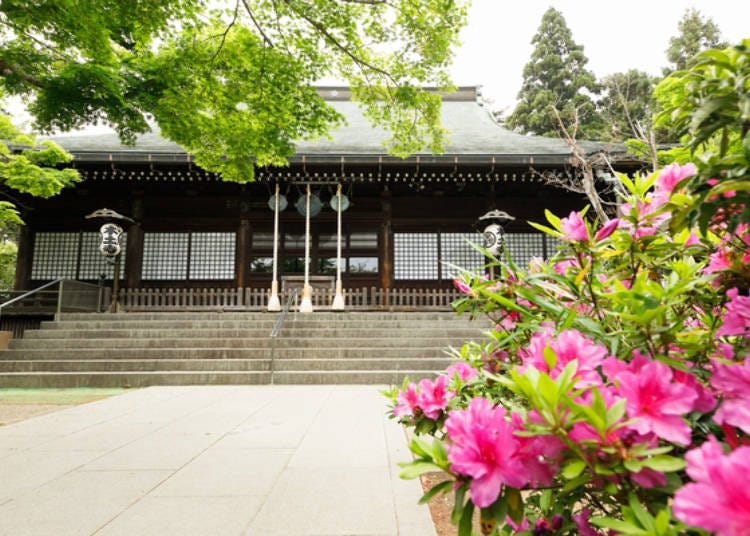
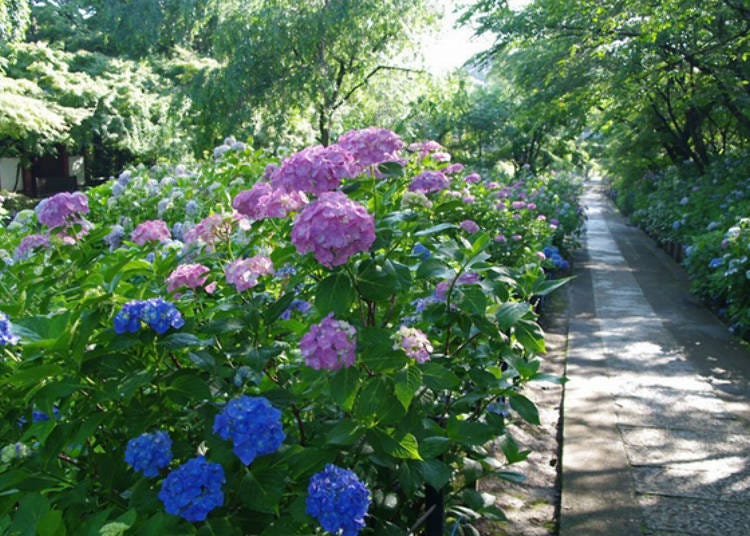
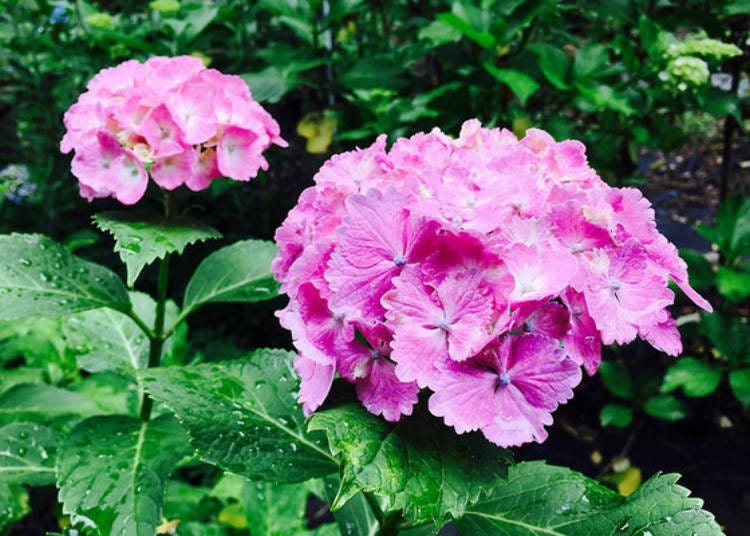
Follow the path behind the main hall and you will see Takebayashi on your left and the Treasure Hall on your right. After this, there is a slightly lower place called Iris Pond. This area is also a photo spot where Japanese hydrangeas and irises can be seen.
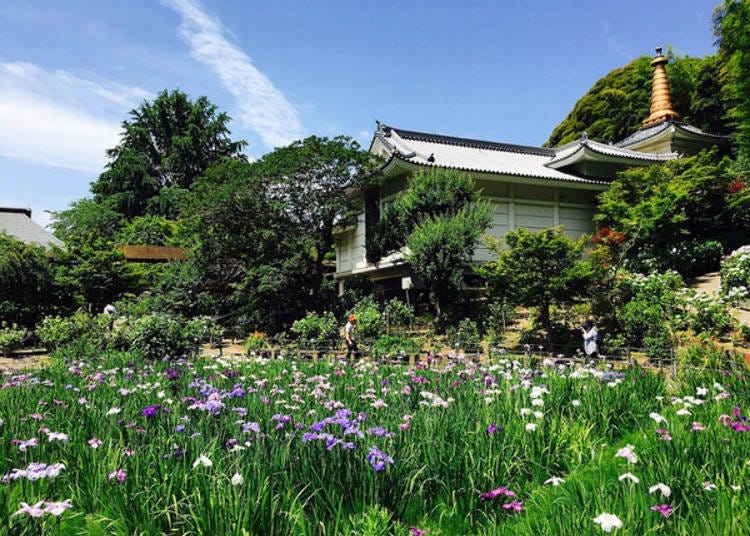
About 5,000 irises are planted in the Iris Pond. In addition to Japanese irises, different trees and hydrangeas are also planted around the pond. It seems to be a particularly popular flower spot in June. As you can walk around the pond, you can go search for good photo points and your favorite flowers.
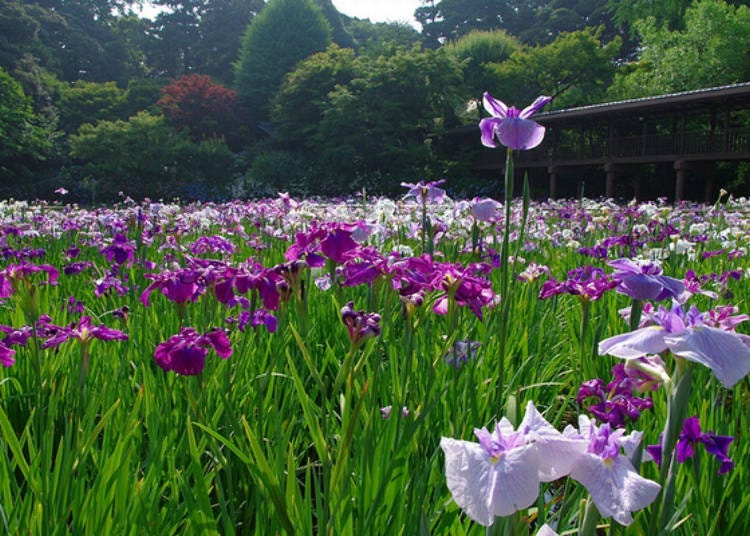
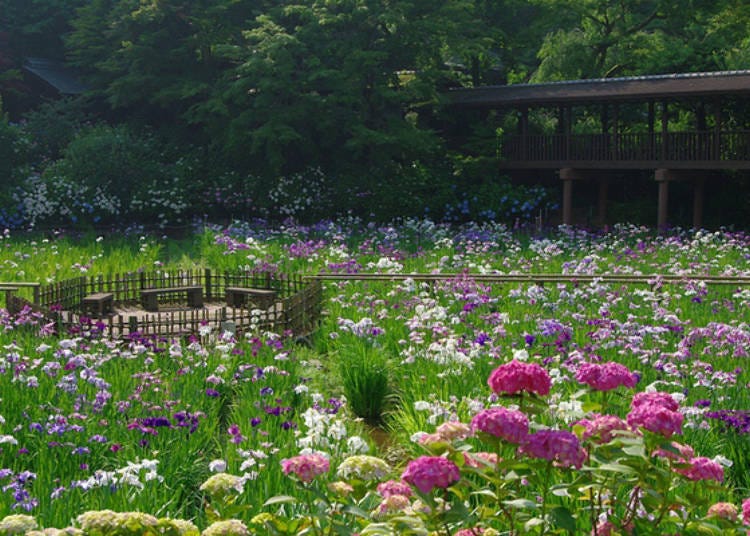
If you want to capture both the hydrangea and the iris in the photo, you should visit by mid-June.
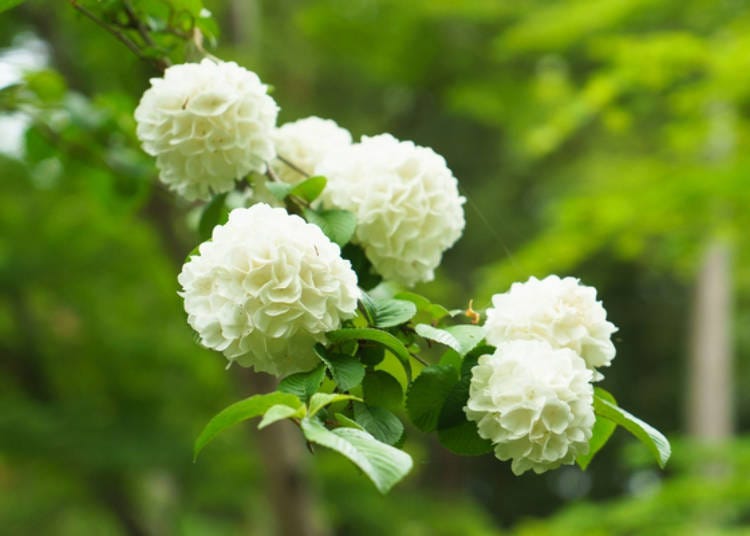
One of the highlights of Japanese hydrangea is the area surrounding the small structure of Myorodo, which is a tad further from Iris Pond. A lot of Japanese hydrangeas are planted on both sides of the path leading to Myorodo, especially on rainy days, which makes visitors feel saturated.
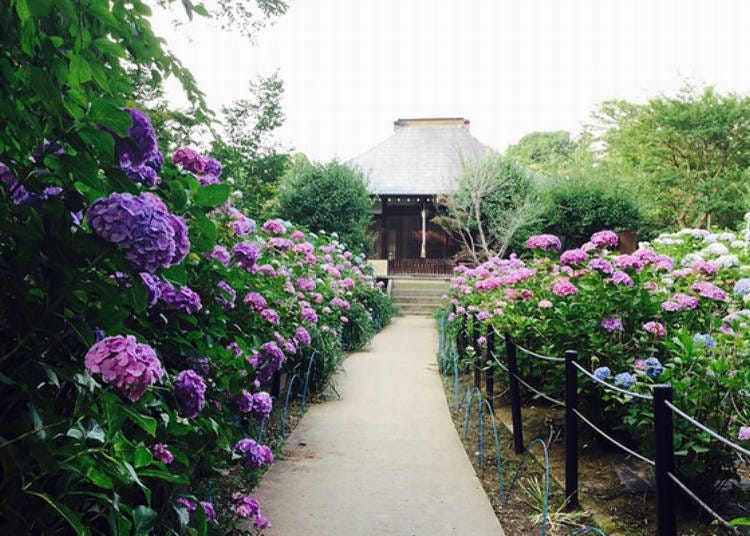
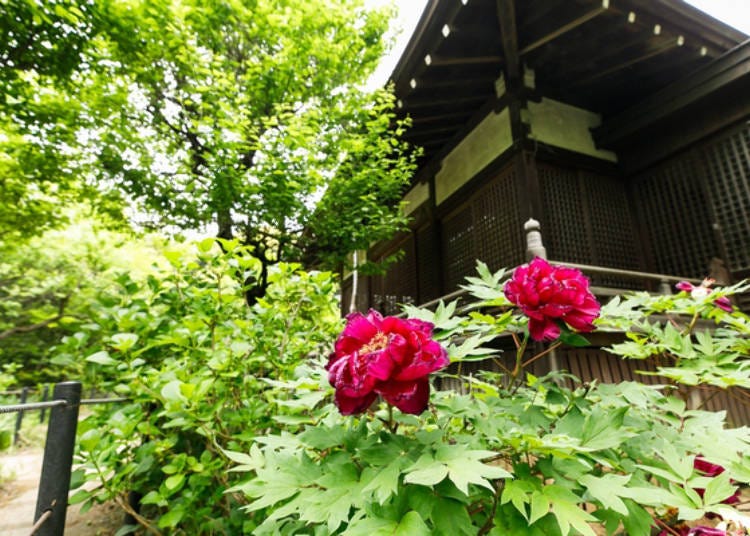
Next, follow the route to “Zoushido.” The statue of Nichizo, who is the younger brother of Nichiren and the founder of the Nichiren sect in Kyoto, is enshrined at the temple.
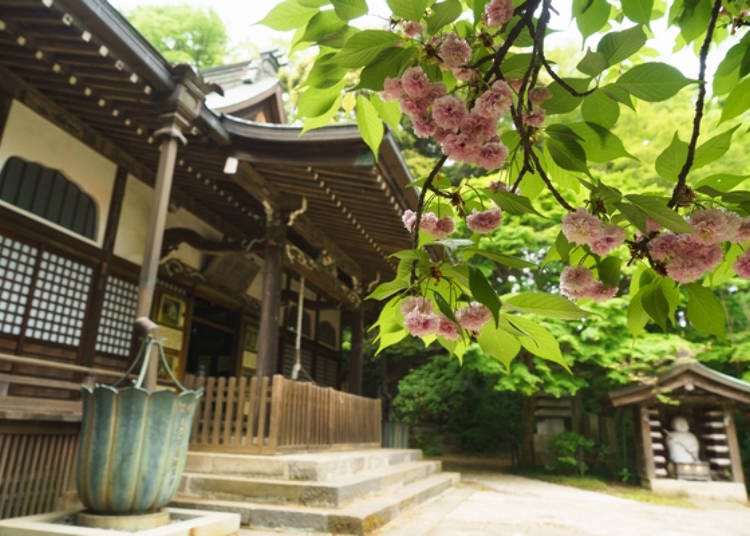
In front of the statue temple, on the left-hand side was Benten Pond, where butterfly flowers - a kind of iris - grow.

Benzaiten is enshrined in the center of Benten Pond, and Senrai Benten, which we will talk about later in this article, is enshrined behind the pond.
Go around Benten Pond and walk toward the entrance to the temple office. Many maple trees are planted in the area, and the autumn is beautiful when the leaves turn red. This is something you definitely want to visit in fall.

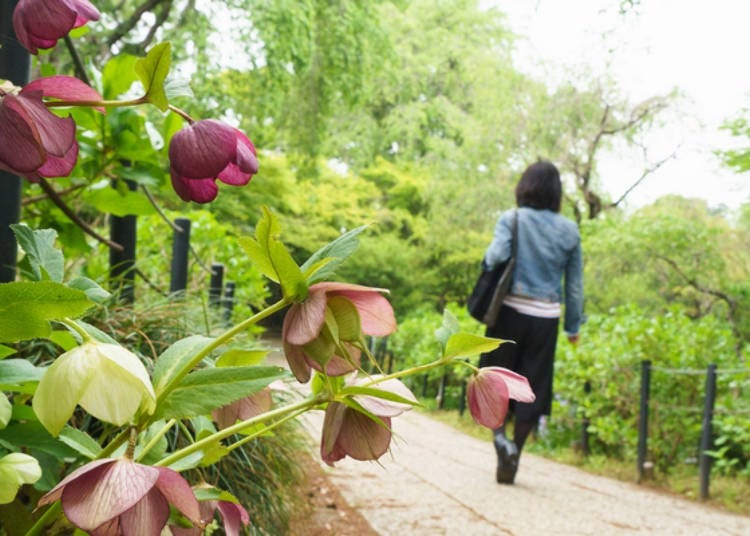
Hondoji is a power spot for safe transport, child treasure, and good luck!
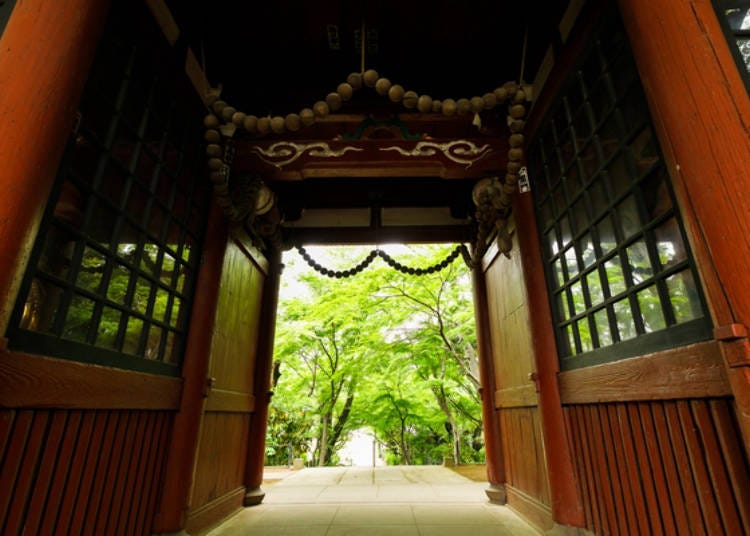
We introduced mainly the highlights of flowers, but this area it is also held to be a power spot for easy delivery and child-rearing. There are also historical spots to visit. Let's take a look at the places you want to visit, not only during the hydrangea season but also in seasons when other flowers bloom.
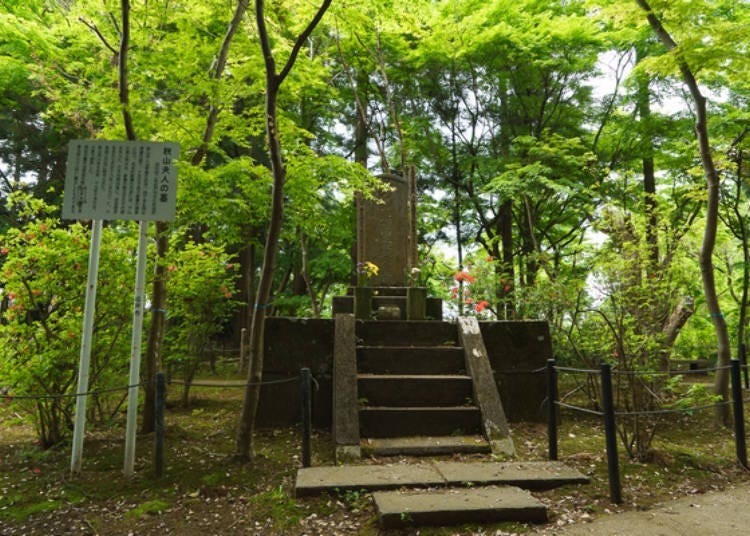
Tombs of Akiyama
Here is a spot related to the Tokugawa family that people who know history know and love. This is the grave of Ms. Akiyama, who was a concubine of Ieyasu Tokugawa. The daughter of the Kai Takeda clan, Torayasu Akiyama, and a woman born to Ieyasu's fifth child, Shinkichi Takeda. It is said that this tombstone was erected by Nobuyoshi's nephew, Mitsukuni Mito, in 1684.
Pine trees, which are said to have been contributed by Mitsukuni, are also planted on the approach to which you have just passed on the way here.
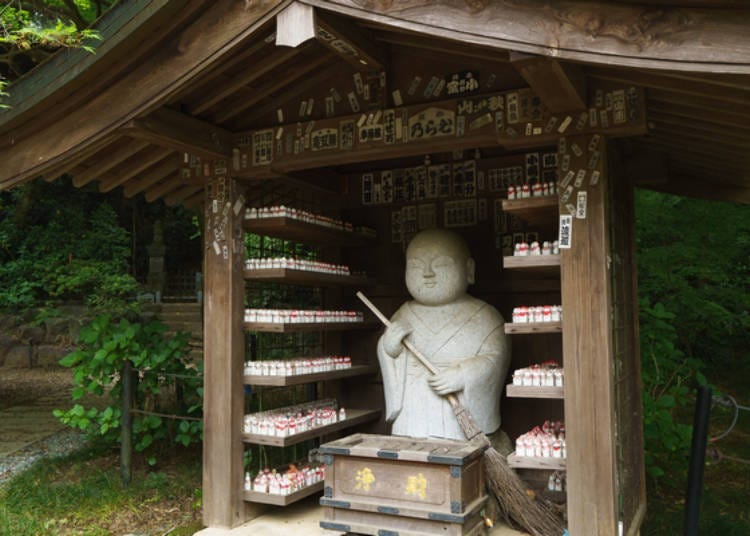
Jizodo
A prayer spot. It is said that a wish can be fulfilled by contributing a small jizo statue (600 yen) with a request.
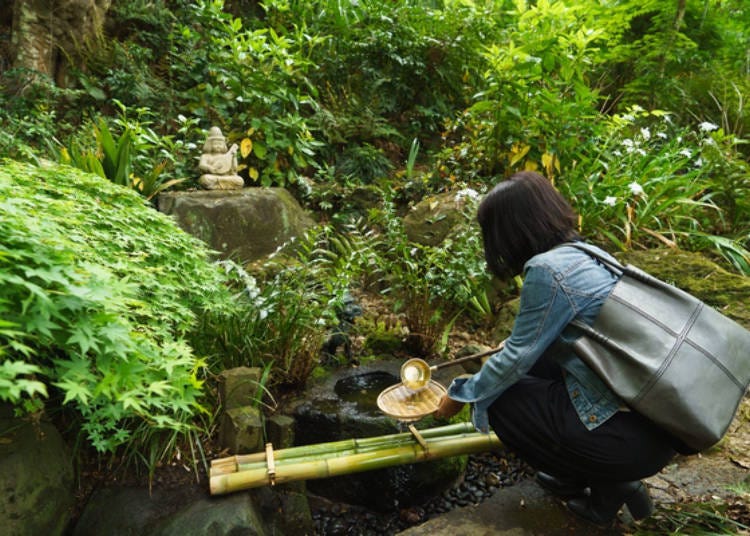
Zeniarai Benten
Kamakura is famous for its Zeniarai Benten, but this temple is also secretly popular as a spot for praying for money. It seems that some people come to visit this purpose.
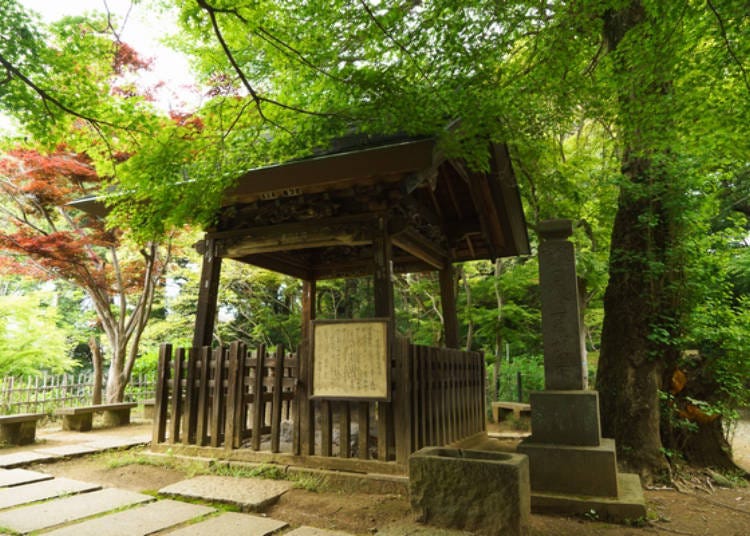
“Milk of Reizu”
It is said a spring gushing out when a statue of Nikki, who was the younger brother of Nikuro, and who was praised as the second Nichiren, was born here and used it as a hot spring.
After drinking the water later, the illness was cured, and the miraculous benefit that milking immediately became better was the end of the prayer line. Today, it is a popular power spot that is said to benefit children, safe birth, and marriage.
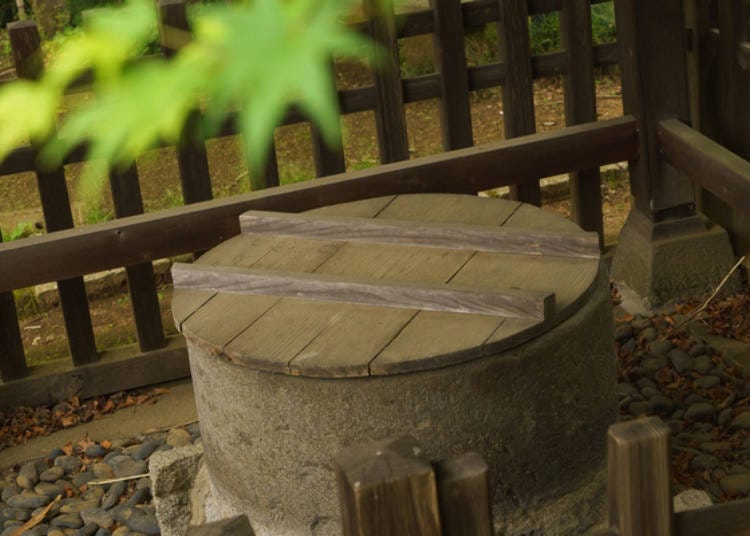

There are many other tombs such as Nichiren, Nichiro, and other statues at the main temple. I think it's interesting to go around.
The hydrangea pattern of the original Goshuin seal book is popular!
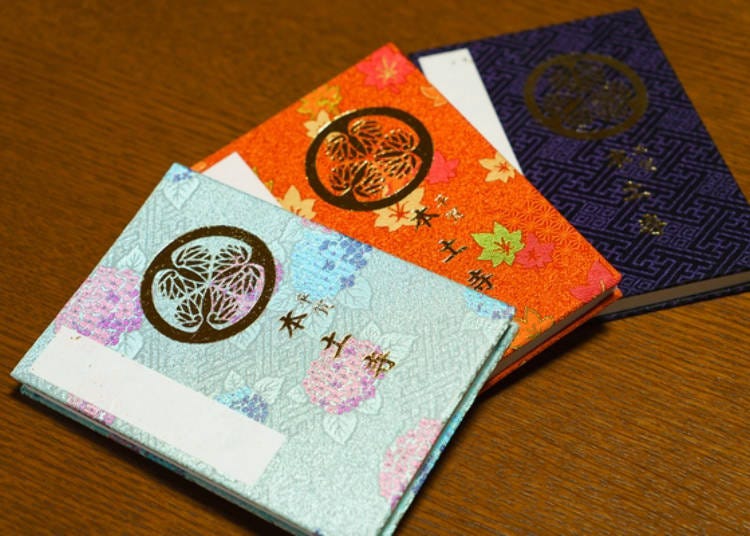
Hondoji has an original Goshuin temple seal book, and the hydrangea pattern seems to be very popular.

Hondoji Temple: A Chiba sightseeing attraction that's beautiful in each season
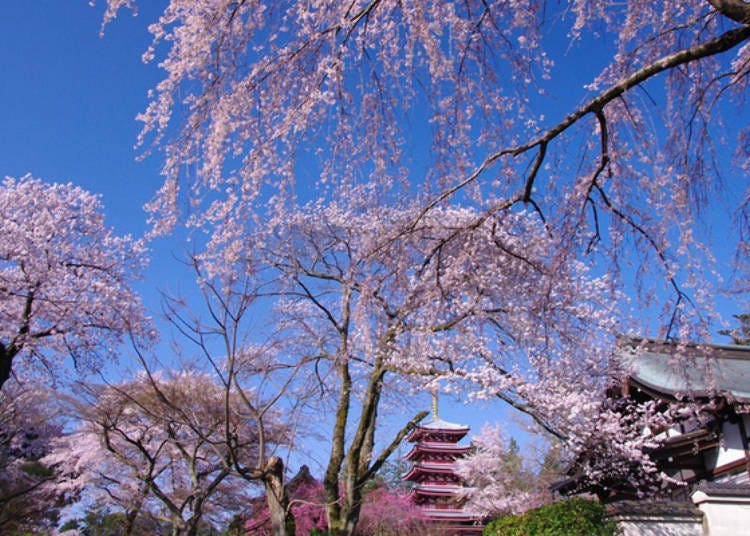
One of the main attractions of Hondoji is that during the rainy season, you will be greeted with cherry blossoms in spring, autumn leaves in autumn and seasonal views. About 100 cherry trees such as weeping cherry trees, Yoshino cherry trees, and double-flowered cherry trees are planted on the grounds of the temple.

There are three types of maples offering a slightly different color palette that gives depth to the scenery.
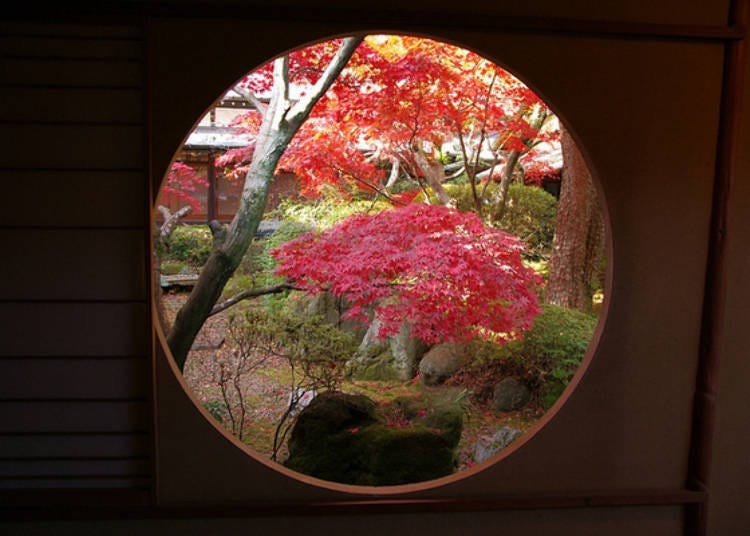
In particular, the view of the courtyard from the tea room used during a meeting is superb. If it is not crowded, it is possible to view from inside.
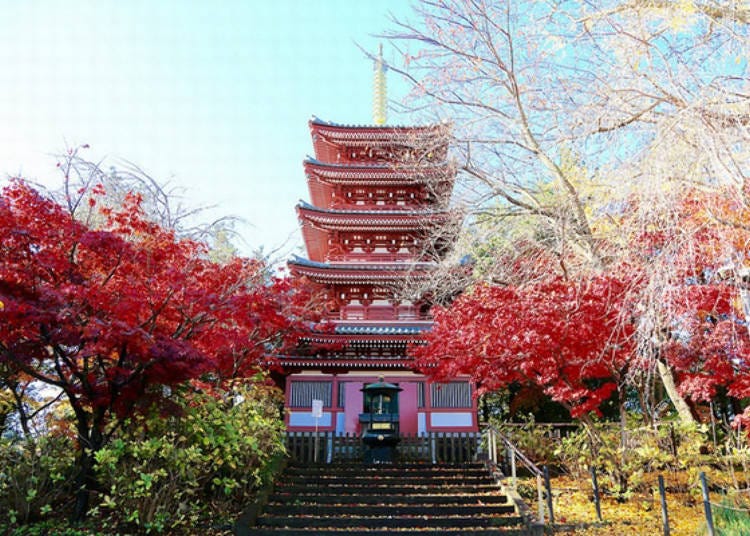
Even on a rainy day in Chiba, Hondoji Temple is stunning
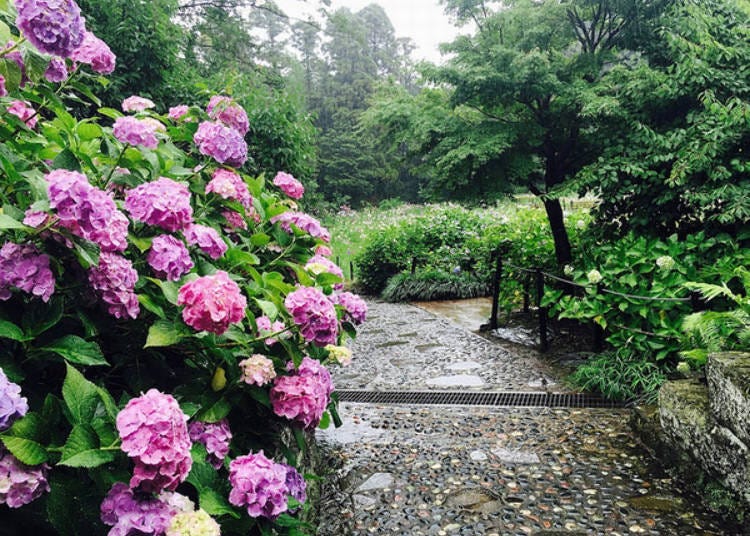
Hondoji Temple is usually visited by many people during the hydrangea and iris seasons around June. If you want to go around slowly, it is recommended that you go on a rainy weekday. The wet hydrangea has a beautiful contrast with fresh green and colors the rainy season sky vividly.
Kamakura is a good spot that's also known for its hydrangea temples, but Hondoji Temple is a must-visit spot for those who want to get to the hidden sights of those who are away from the hustle and bustle of Tokyo.
* Photos of hydrangea, irises, cherry blossoms, and autumn leaves are from 2017 or earlier.
-
Chokokusan Hondoji日蓮宗総本山 長谷山本土寺
- Address 63 Hiraga, Matsudo City, Chiba Prefecture
- Phone Number 047-346-2121
Admission time: 8:00am - 5:00pm (Reception - 4:30pm)
(June 8:30am – 5:00pm)
No regular holiday
Admission fee: 500 yen for junior high school students and above (free for elementary school students and under)
* There is a free worship period throughout the year.
Written by Miki Hirama
Related Articles
- Area
- Category
*Prices and options mentioned are subject to change.
*Unless stated otherwise, all prices include tax.
Popular Tours & Activitiess
Recommended places for you
-

Jujutsu Kaisen Takes Over JR East With a Wrapped Shinkansen This Winter
by: Guest Contributor
-

Japan’s Shinkansen Is About to Change Travel in an Unexpected Way
by: Guest Contributor
-
Ad

Preserving the Beauty of World Heritage Site Shirakawa-go for the Future Through Responsible Travel
-
Ad

Complete Guide to Ueno's National Museum of Nature and Science, the Perfect Place to Visit on Rainy Days or With Children
-
Ad

(Opening in Jan 2026) 'THE SUMO LIVE RESTAURANT HIRAKUZA GINZA TOKYO!' 5 Exciting Ways to Experience the World of Sumo!
-

First Japan Cherry Blossom 2026 Forecast Announced! Here's When & Where to See Sakura in Japan
Inspiration for Accommodations
-

Enjoy Mt. Fuji from the Comfort of Your Room! Recommended Ryokan with Mt. Fuji View
-

Stay Near the Cherry Blossoms! Hotels for Cherry Blossom Viewing in Tokyo
-

Family-Friendly Hotels with Free Shuttle to Disneyland: Convenient Access for a Magical Stay
-

Top Ranked Hakone Hotels with Mt. Fuji View: Enjoy Stunning Scenery from Your Private Space
-

Convenient Tokyo Hotels with Airport Shuttle: Ideal for Families and Heavy Luggage
-

Stunning Tokyo Tower View Hotels: Enjoy Spectacular Scenery from Your Private Space
-

Convenient Asakusa Hotels with Kitchens: Ideal for Extended Family Visits
-

Experience Luxury: Hakone's 10 Best Five-Star Accommodations
-

Enjoy Mt. Fuji Autumn Leaves! Top Hotels Near the Popular Autumn Leaves Corridor
-

Experience Hakone Fall Foliage from Your Room with Stunning Views
-

Past and present of Yanesen
-

The Vivid Nightlife of Tsukiji
-

Shibuya Crossing: Getting the Best View from the Deck at Magnet by Shibuya109!
-

One-Day Itinerary Idea: Tour Tokyo's Historic Asakusa Neighborhood
by: Mae Kakizaki
-

Awesome Things to Do In Japan: Most Popular Temples in Asakusa! (March 2020 Ranking)
-

Secrets to Shopping in Japan: Guide to Annual Sales in Japan & Where to Shop
by: Miyu Shimada
- #best ramen tokyo
- #what to buy in ameyoko
- #what to bring to japan
- #new years in tokyo
- #best izakaya shinjuku
- #things to do tokyo
- #japanese nail trends
- #what to do in odaiba
- #onsen tattoo friendly tokyo
- #daiso
- #best sushi ginza
- #japanese convenience store snacks
- #best yakiniku shibuya
- #japanese fashion culture
- #best japanese soft drinks


















